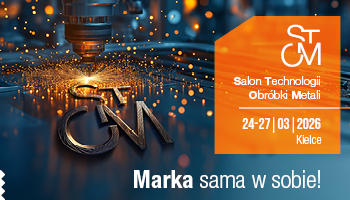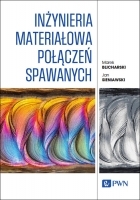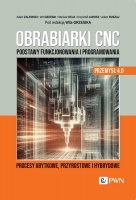Application of the high pressure torsion supported by mechanical alloying for the metal-graphene composites preparation
Zastosowanie skręcania wysokociśnieniowego wspomaganego stopowaniem mechanicznym na potrzeby wytwarzania kompozytów metal-grafen
Mechanik nr 02/2015 - Artykuły z Międzynarodowej Konferencji Innovative Manufacturing Technology IMT 2014 zamieszczone na płycie CD
ABSTRACT: From the time when the method of a monolayer graphene preparation was published the scientific activity concerning the properties, production and application of this special form of carbon is very intensive. Graphene is two dimensional (2D) crystalline material, stable in a wide temperature range, possessing unusual electronic,electrical, thermal and mechanical properties. Graphene and the graphene oxide properties may be used in the range of the metal matrix composites, in which case graphene particles may improve electrical and thermal conductivity or/and strength of the material. The paper presents results of the studies concerning application of the high pressure torsion, one of the method of intensive deformation of metals to the powders consolidation to the homogenous composite metal-graphene structure. The aluminum and copper - graphene compositions were investigated. It was found that mechanical alloying as the preliminary step increased density and microhardness of the samples achieved by the High Pressure Torsion. As a result small, thin and round samples of composites and similar metallic samples not containing graphene, about 10 mm in diameter were achieved. The X-ray diffraction (XRD), transmission electron microscopy (ТЕМ), Raman spectroscopy and X-ray photoelectron spectroscopy (XPS) were applied to study structure and analyze graphene content and atomic bonds. The Raman spectroscopy proved the presence of the multilayer graphene which could also be identified as the defected nano-graphitc as a component of the composite structure. In case of the Al-graphene composites small content of the aluminum carbides was detected as well. The metallic matrices of the samples revealed highly dispersed microstructures transmission electron microscopy show, in dependence on the number of rotations applied in the High Pressure Torsion process, leading to the increased plastic deformation of the consolidated material. The XPS method revealed increased amount of the carbon-metal and carbon- metal- oxygen atomic bonds in the case of the metal-graphene composites, suggesting partial transformation of the multilayer graphene in the graphene due to the high range of deformations applied.
KEYWORDS: high pressure torsion, metal-graphene composite, mechanical alloying, structure study.
STRESZCZENIE: Praca przedstawia wyniki badań dotyczących próbek z proszku aluminium i kompozytów aluminium–grafen, wytworzonych w dwóch etapach: mechanicznej syntezy mieleniem i intensywnego odkształcenia metodą skręcania pod wysokim ciśnieniem. Wytworzono próbki w postaci okrągłej, o średnicy około 10 mm, charakteryzujące się znaczną jednorodnością mikrostruktury w przekroju. Zastosowanie wstępne mechanicznej syntezy podniosło mikrotwardość próbek i stopień kompresji. Dodatek grafenu nie miał wpływu na te parametry. Przeprowadzono badania metodami transmisyjnej mikroskopii elektronowej, spektroskopii Ramana i spektroskopii fotoelektronów XPS. Wyniki transmisyjnej mikroskopii elektronowej i spektroskopii Ramana wskazują na równomierne rozłożenie cząstek grafenu na powierzchni ziaren matrycy. Zwiększenie odkształcenia ścinającego w metodzie skręcania pod wysokim ciśnieniem prowadzi do silniejszego rozdrobnienia struktury matrycy i cząstek grafenu. Jak wynika ze spektroskopii Ramana, wprowadzony grafen może być zakwalifikowany jako grafen wielowarstwowy, zdefektowany. Konsolidacja przy pomocy intensywnego odkształcenia skręcaniem pod wysokim ciśnieniem zwiększa zdefektowanie i dyspersję grafenu oraz prawdopodobnie zwiększa zawartość grafenu o małej ilości warstw. Metoda XPS wskazuje na powstawanie wiązań atomowych węgiel–glin i zmniejszenie udziału wiązań węgiel-węgiel i glin-glin. Stwierdzono także tworzenie się niewielkiej ilości węglików aluminium.
SŁOWA KLUCZOWE: skręcanie wysokociśnieniowe, kompozyt metal-grafen, stopowanie mechaniczne, analiza struktury.
BIBLIOGRAFIA / BIBLIOGRAPHY:
- NOVOSELOV K.S., GEIM A.K., MOROZOV S.V., JIANG D., ZHANG Y., DUBONOS S.V. at. al., Science 306(5696) (2004) 666.
- GEIM A.K., Science 324 (5934) (2009) 1530.
- GEIM A.K., NOVOSELOV K.S., Nat Mater 6(3) (2007) 183.
- NOVOSELOV K.S., JIANG Z., ZHANG Y., MOROZOV S.V., STORMER H.L., ZEITLER U., et al., Science 315(5817) (2007) 1379.
- ROCHA C.G. at.al., Tailoring the Physical Properties of Graphene. In: Graphene, Synthesis and Applications, W. Choi, J. Lee, (eds.), CRC Press, Boca Raton, London, New York 2012, p.1.
- LEE C.G., WEI X.D., KYSAR J.W., HONE J., Science 321(5887) 385 (2008).
- LAHIRI D., AGARWAL A., Graphene Reinforced Ceramic and Metal Composites. In: Graphene, Synthesis and Applications W. Choi, J. Lee (eds.), CRC Press, Boca Raton, London, New York 2012, p.188.
- ROCHA C.G. at.al. Tailoring the Physical Properties of Graphene. In: Graphene, Synthesis and Applications W. Choi, J. Lee (eds)., CRC Press, Boca Raton, London, New York 2012, p.10.
- OTSUJI T., SUEMITSU T., SATOU A., SUEMITSU M., SANO E., RYZHII M., RYZHII V. Electronic and Photonic Applications for Ultrahigh-Frequency Graphene-Based Devices. In: Graphene, Synthesis and Applications W. Choi, J. Lee, (eds.) CRC Press, Boca Raton, London, New York 2012, p.85.
- PEI S., CHENG H-M., Carbon (2011) doi:10.1016/j.carbon.2011.11.010.
- HAWELEK L., et. al, Diamond Relat.Mater. 35 (2013) 40-46.
- VALIEV R.Z., ZHILYAEV A.P., LANGDON T.B., Principles and Technical Parameters of High-Pressure Torsion. In: Bulk Nanostructured Materials R.Z. Valiev (ed.) TMS Wiley, Hoboken, New Jersey 2014 pp. 25-33.
- VALIEV R.Z., ZHILYAEV A.P., LANGDON T.B., HPT Processing of Metals, Alloys and Composites. In: Bulk Nanostructured Materials R.Z. Valiev (ed.) TMS Wiley, Hoboken, New Jersey 2014 pp.88-145.
- BARROS A. M., TENÓRIO J. A. S., Intermetallics 13 (2005) 137-140
- BARÓ M. D., MLAGELADA J., SURIÑACH S., CLAVAGUERA N. AND CLAVAGUERA-MORA N. T. Calorimetric Study of Reordening of Disordered L12, Ni3Al Based Alloys. In: Ordering and disordering in alloys A .R. YAVARI (ed.), Elsevier Applied Science, 1992, pp. 55-66.
- KORZNIKOV A.V., DIMITROV O., KORZNIKIOVA G. F., DALLAS J. P., IDRISOVA S. R., VALIEV R. Z., FAUDOT F., Acta mater 47 (1999) 3301.
- KORZNIKOV A.V., PAKIEŁA Z. AND KURZYDŁOWSKI K.J., Sripta Met.45 (2001) 309-315.
- SORT J., ILE D.C., ZHILYAEV A.P., CONCUSTELL A., CZEPPE T., STOICA M., SURIÑACH S., ECKERT J., BARÓ M.D., Sripta Mat. 50 1221 (2004).
- CZEPPE T., KORZNIKOVA G., MORGIEL J., KORZNIKOV A., CHIH N.Q., OCHIN P., SYPIEN A., J. All. Comp. 483 (2009) 74-77.
- VALIEV R.Z., ZHILYAEV A.P., LANGDON T.B., Principles and Technical Parameters of High-Pressure Torsion. In: Bulk Nanostructured Materials R.Z. Valiev (ed.) TMS Wiley, Hoboken, New Jersey 2014 p. 30.
- JORIO A., Prototypes for Nanoscience and Nano metrology. In: Raman Spectroscopy in Graphene Based Systems ISRN Nanotechnology, (2012) doi: 10.5402/2012/234216.
- FERRARI A.C., MEYER J.C., SCARDACI V. at.al., PRL 97 (2006) 187401.
- CHILDRES I., JAUREGUI L.A., PARK W., CAO H., CHEN Y.P., Raman Spectroscopy of Graphene and Related Materials, Chapter 19. In: New Developments in Photon and Materials Research,. J.I. Jang (eds), Nova Science Pub Inc, 2013.
- Electron Spectroscopy Database; www.lasurface.com
- NIST X-ray Photoelectron Spectroscopy Database; http://srdata.nist.gov/xps/




















